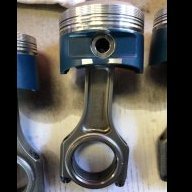My Diy Attempted Rb25\30 Build - Is Running But There Are Some Issues
Announcements
-
Similar Content
-
Latest Posts
-
"CAD" version 1.0 It will have a 15mm lip around the top for 6 × 5 or 6mm nutserts and fixtures (two on each of the three straight edges), and some pinch weld on any exposed edges, it has three mounting points, one of the power steering reservoir bolts, and two on the rad support, my 120mm hole saw will make short work of hole for the silicone joiner, with ample room for some pinch weld I've also got enough Carbuilders "peel and stick" heat shield to cover the outside of it at the coolant expansion tank and on the engine side, as pictured, and internally on the lid and where the fuse box is, I've also got some thin, about 3mm, black 3M single sided sticky foam stuff that was left over after sealing some door drafts at home to help seal the lid As for the shape, it "sort of" matches the shape of the fuse box, so shouldn't look to "out of place" The lower area and hole for the intake will need pinch weld with a balloon on it to fully seal the hole and bottom of it, that will happen after it has been fabricated so I know exactly what size is required Filter service has been trialed, and so far it was a simple process Just need to get some alloy, and then head into work to use the guillotine and break press in the workshop Hopefully it should be sorted in a week or two Guestimated outlay will be under a $50 for the stuff I don't have on hand (alloy, 6mm nutserts, the pinch weld, and wrinkle paint) Disclaimer: That's what the "voices in my head" are telling me how the filter box should end up getting done......lets see if they know what they are talking about
-
Have been polishing up the trailer rims as they had been sitting in the shed for a few years and are really in need of some love. This was after a couple of passes with chrome polish - coming up quite well ✅ .
-
Welcome aboard! Is your Skyline auto or manual? I'm assuming manual. Does it have any mods done yet?
-
Hey mate, the brown and grey plugs would usually go to the TPS, brown one goes on the bottom connector and grey is the top but isn't used unless the car is auto, your TPS looks different to mine though I've got a series 2 engine.






Recommended Posts
Create an account or sign in to comment
You need to be a member in order to leave a comment
Create an account
Sign up for a new account in our community. It's easy!
Register a new accountSign in
Already have an account? Sign in here.
Sign In Now